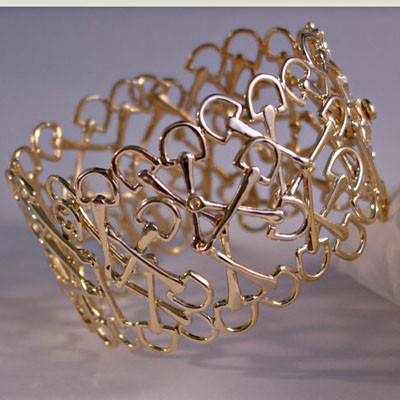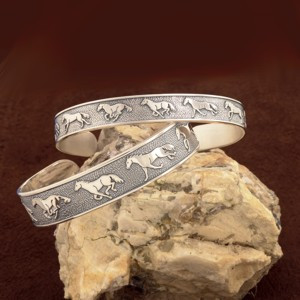- Home
- Blog
Recent Posts
- » November Notes: Cozy Equestrian Style & Thoughtful Gifting with Showstable Artisans
- » Fall Into Style: Equestrian Elegance
- » Welcome Early Fall with Warm Style and Equestrian Elegance
- » Savoring the End of Summer: Equestrian Style That Lasts Beyond the Season
- » Mid-Summer Style: Celebrate the Heart of Equestrian Season with Showstable Artisans
Blog
Posted on 7th Jul 2021
This story appears in the Summer 2021 issue of Town & Country
In the Marvel superhero flick Black Panther, the kingdom of Wakanda’s fiercest warriors are all women. The group, known as the Dora Milaje, are characterized by their red and gold outfits, for which veteran costume designer Ruth E. Carter took inspiration from the Turkana and Maasai cultures of Kenya. Reinforcing their battle gear were stacked neck rings and matching cuffs by designer Douriean Fletcher that call to mind the Ndebele women of South Africa. Then there is Wonder Woman, a master at harnessing the potential of cuffs—hers repel bullets, after all. In the latest installment of her franchise, Wonder Woman 1984, Gal Gadot doesn’t just sport cuffs for protection on the job, she also incorporates the power piece into her off-duty look, in the form of—what else?—Elsa Peretti’s Bone cuff.

It’s hardly a coincidence, then, that as we prepare for the transition back to IRL socializing, cuffs are enjoying a renaissance. See: the spring/summer runways of Louis Vuitton, Chanel, and Chloé. Jewelers too are heralding the comeback with stylish new designs, some decorated with colorful gems, others studded with sleek black diamonds.
Call them armor for stepping out into the world again, or symbolic expressions of liberation (at last), or maybe it’s just a simple desire to feel sexy and invincible. Or, better yet, all of the above. “Cuffs are an unapologetic style statement,” says Nico Landrigan, president of Verdura. “I see them as a wink and nod to what has come before. They’re the iconography of female power.”

The ancient Egyptians, Greeks, and Romans brandished cuffs as status markers and talismans of protection. Centuries later, Coco Chanel showed her inimitable independent streak by taking apart the jewels she received from her lovers, among them Russia’s Grand Duke Dmitri, and asking her friend Fulco di Verdura to create something new. So was born Verdura’s iconic Maltese cross cuffs, which Chanel wore everywhere, from beach to black tie, always as a pair and most certainly as constant reminders of her self-determination. Even her equally singular contemporaries, like Nancy Cunard, Millicent Rogers, and Helena Rubinstein, rarely left their wrists bare.
Cuffs were also Buccellati’s best-sellers, according to patriarch Andrea Buccellati, who continues to create new renditions of the house signature. “When I draw cuff bracelets, I have the possibility to express all the fundamental concepts of the maison’s workmanship,” he says. “The surfaces are wide, so I can combine openwork and tulle techniques with the engraving, and play with colored stones.”

“As we prepare for the transition back to IRL socializing, cuffs are enjoying a renaissance.”
Not surprisingly, the last major cuff revival took place in the 1970s, another time defined by liberation, when they became inextricably linked to the feminist movement. Van Cleef & Arpels, for example, created a series of handwrought cuffs in gold that were favored by Jackie Onassis. But it was Elsa Peretti who really captured the essence of the era with the sensuous, sculptural Bone cuff that she designed for Tiffany & Co. It embodied the ’70s spirit with a minimalist form that molded to the curves of the wrist. For the collection’s 50th anniversary last year, Tiffany released new models, including sterling silver, gold, and copper iterations studded with stones of turquoise, jade, and obsidian. “The Bone cuff is indicative of such a strong sense of style,” says celebrity stylist Karla Welch, who accessorized Tracee Ellis Ross with a gold pair for the NAACP Image Awards in March.
In other words, this summer the message is clear: Cuffs will be key emblems of post-pandemic freedom, especially when worn as a set.
This story appears in the Summer 2021 issue of Town & Country.
 Loading... Please wait...
Loading... Please wait...